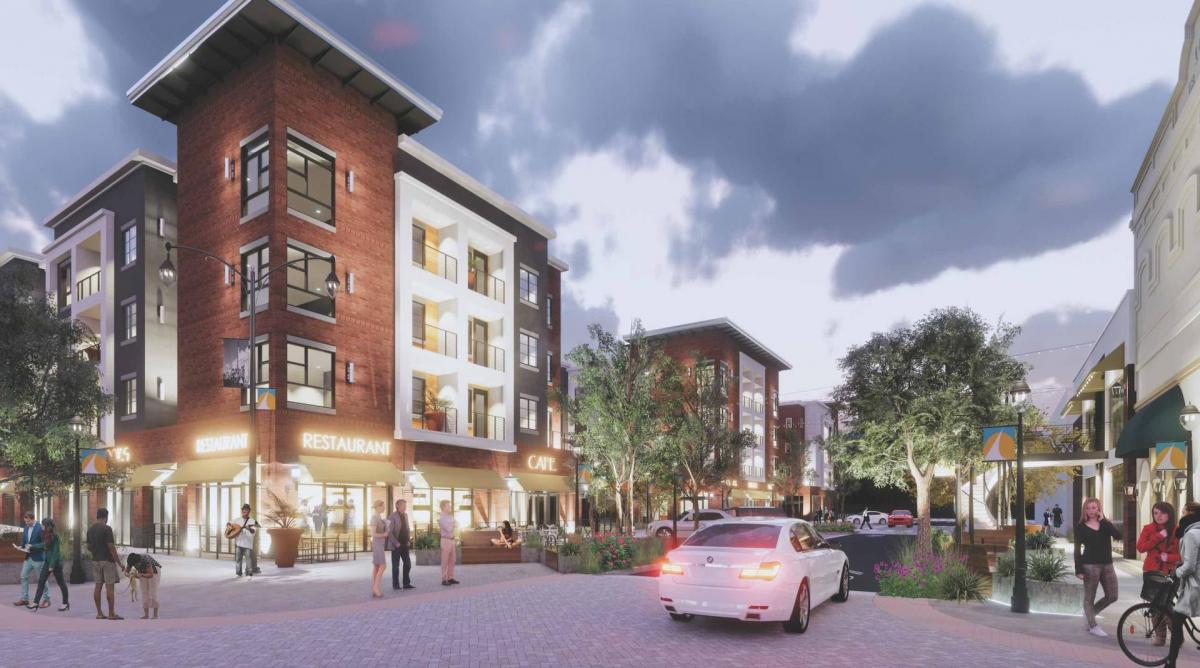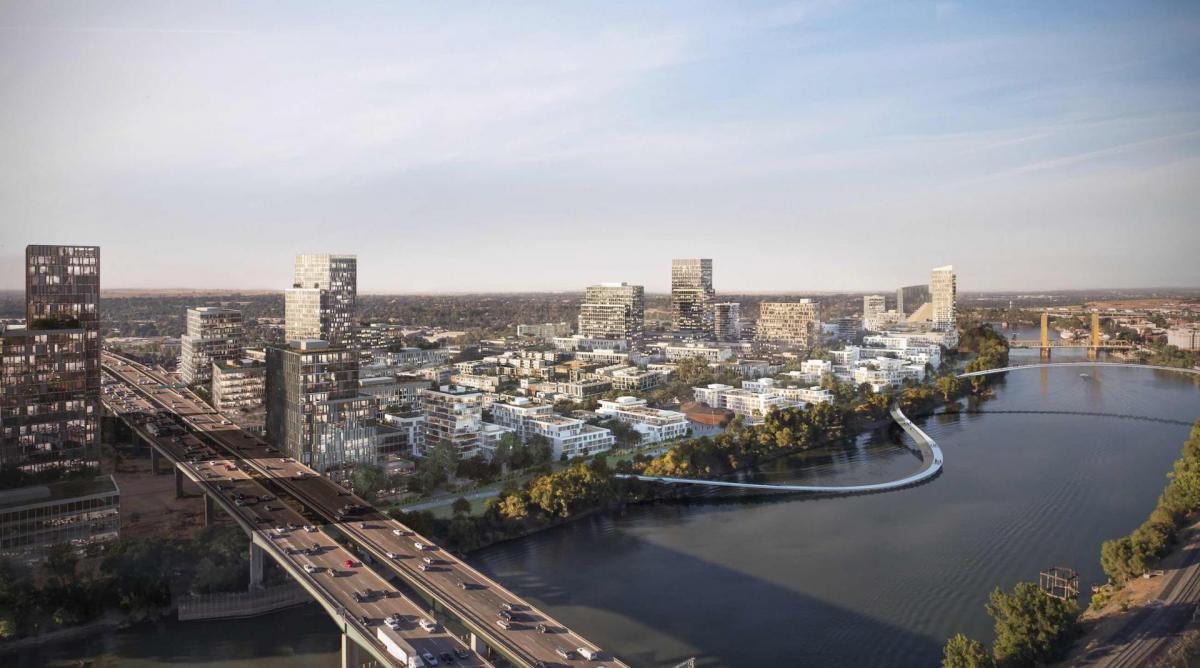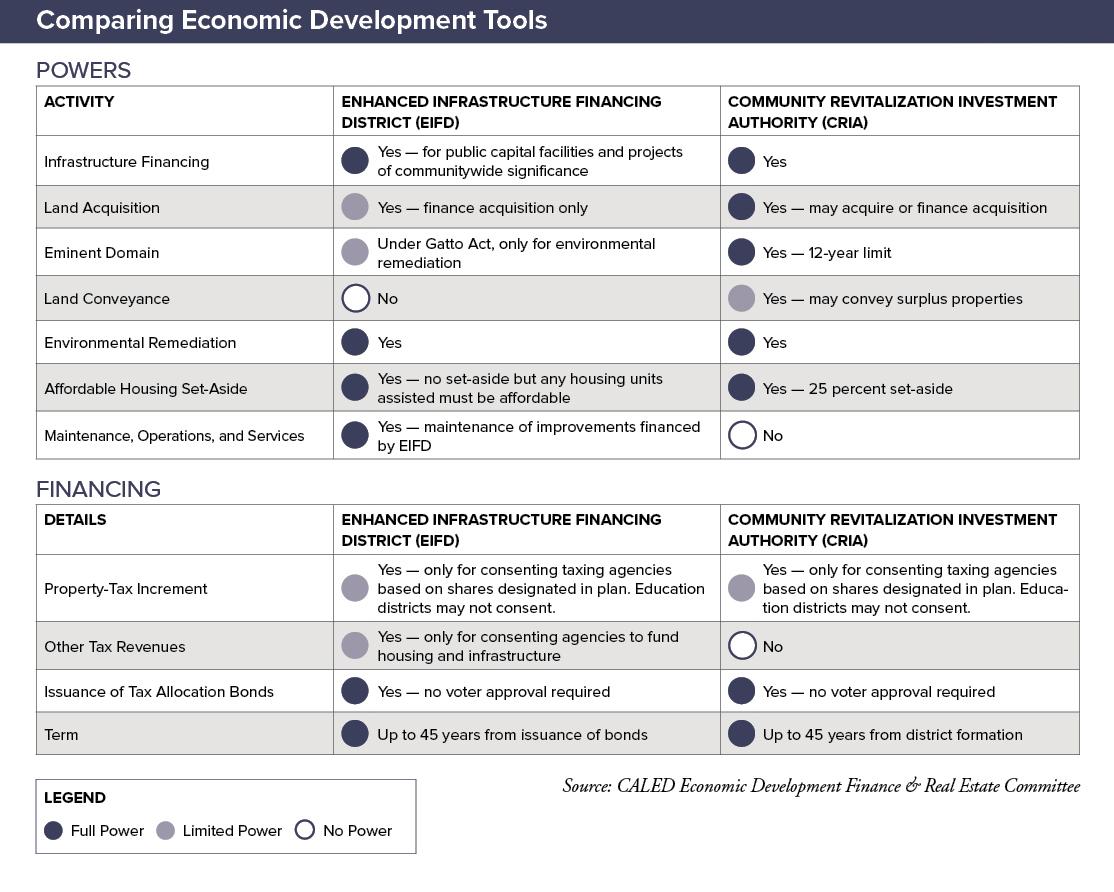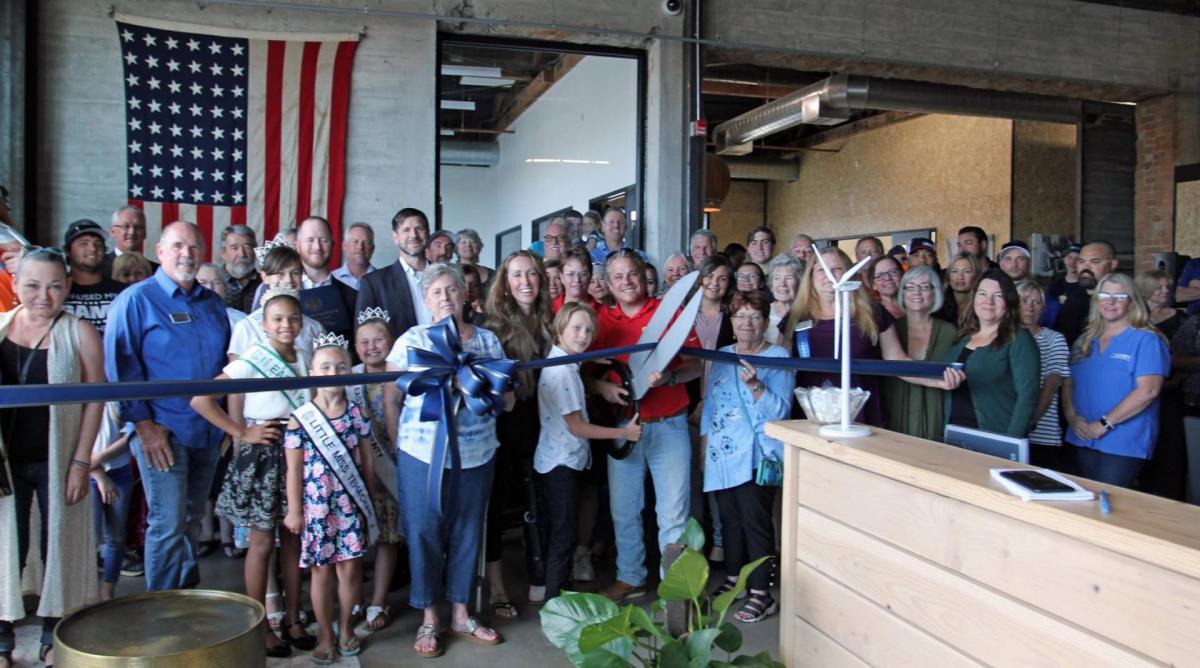Build Economic Development Momentum With Tools, Teams, and Tactics
Gurbax Sahota is president and CEO of the California Association for Local Economic Development (CALED) and executive director of the California Academy for Economic Development; she can be reached at gsahota@caled.org.
The California Association for Local Economic Development (CALED) defines economic development as “the creation of wealth from which community benefits are realized.” Economic development typically involves a broad, strategic effort to create jobs and support current and potential businesses. But it’s more than a jobs program — it is an investment in expanding the local economy and improving prosperity and the quality of life for all residents. This investment starts with fostering collaboration among your city’s staff, community stakeholders, and partners who can enhance local business resources.
In most cities, economic development competes for resources and attention as local officials deal with urgent issues that include affordable housing, emergency response, and more. Despite these challenges, many cities are building momentum in realizing their economic development goals. This article explores some of the tools, potential team members, and tactics that can help your city boost its economic vitality.
Making the Best Use of Available Tools
Economic development activities can be divided into two types: traditional and technical. Traditional activities include helping companies thrive through efforts that retain, expand, create, and attract businesses. Technical activities comprise cities’ efforts to prepare and assemble land for investment projects and opportunities. Today, California cities have access to many tools to support both types of activities.
For many years, redevelopment was the primary technical economic development tool in the Golden State. Redevelopment used tax-increment financing to revitalize blighted areas. At its peak, redevelopment generated over $6 billion a year for cities. But in 2011, the state abolished redevelopment.
Beginning in 2014, the Legislature developed several tools to help replace some of redevelopment’s components. Enhanced Infrastructure Financing Districts (EIFDs) and Community Revitalization Investment Authorities (CRIAs) are now the primary economic development tax-increment financing tools. While both have useful powers, cities are turning more to EIFDs to further their economic development goals. The chart (below) compares the features of EIFDs and CRIAs.
In 2017, the City of West Sacramento (pop. 53,911) was the first to create an EIFD. Several more have been created since, including the first city-county collaboration with the City of Placentia (pop. 52,333) and Orange County. At least a dozen or more are underway; for example, the City of Sacramento (pop. 508,172) recently formed an EIFD to revitalize a former railyard site and jump-start local economic investment specifically to finance infrastructure that will support a Major League Soccer stadium and surrounding development. In addition, AB 806 (Chapter 503, Statutes of 2016) allows cities and counties to acquire, sell, or lease real property to promote economic development.
Opportunities still exist to improve the available technical economic development tools. More bills to address this issue will likely be introduced in 2020.
The most important tool is effective local leadership. By listening to residents’ needs, creating a long-term vision for the city, articulating that vision in a strategy, and championing and funding the work needed to meet the metrics identified in the strategy, city leaders can create a vibrant future for their communities.
For example, over the past decade, the City of Needles (pop. 5,085) has worked to embrace cannabis-related businesses in an effort to raise revenue for community benefits and create jobs. The city embarked on this effort in 2012 — six years before recreational cannabis became legal statewide — because local leaders had a vision to prepare for opportunity, and they knew cannabis would provide a way to increase economic options for their residents.
Along with strong local leadership, the following tools can also be helpful.
Economic Development Element and Strategy. Because economic development doesn’t happen overnight, cities need to thoughtfully plan their future and chart a course in a document that current and future leaders can use to maintain focus and benchmark success. The Economic Development Element of a city’s General Plan provides a mechanism for this. Many cities already include this element in their plans; for example, in the City of Chico (pop. 112,111), the Economic Development Element “guides the city’s use of resources to protect and improve Chico’s economic vitality.” Numerous examples can be located with an online search; city officials may find those most recently adopted or amended to be of greatest use.
Data. To support existing businesses and attract new ones, you must know your city’s competitive advantages and disadvantages, including demographics and key assets. Cities can access many data sources; in selecting one, make certain the data is current and maintained regularly, based on sound methodology, and paints an accurate picture of what your community has to offer. Such data is an essential component in developing the business case for your city; for example, the cities of Stockton (pop. 316,410) and Long Beach (pop. 475,013) used this type of information in marketing tools created to attract Opportunity Zone investments (see “About Opportunity Zones,” below).
Permitting. Many cities, such as Riverside (pop. 328,101), have done an excellent job of streamlining permitting processes to ensure compliance with local ordinances and to provide value to developers and businesses. Many cities post their process and fee schedules online and provide a direct point of contact for the business to facilitate faster turnaround on permit requests. To increase certainty and transparency, some cities offer developers and businesses an online portal to track their progress in the permitting process.
Zoning. Land use and zoning are important tools for encouraging economic development. Many cities are seeing the benefit in creating Specific Plans, incorporating density bonuses, and adding to and capturing value through how property is zoned. For example, increasing a parcel’s density allowance or changing the land-use zoning increases the value of the land, and the city may then use that increased value as leverage to negotiate community improvements with a developer interested in the property.
Infrastructure. The availability and adequacy of public infrastructure is frequently a “make or break” issue for economic development projects. Cities often prioritize infrastructure investments based on the benefits such improvements can offer to businesses; in these cases, the city strives to balance the needs of residents and businesses.
Land Assembly. It can take many years and significant investment to assemble land needed for a priority economic development project. Cities are often better positioned than developers or others to undertake these long-term efforts.
Training and Staffing. Cities can’t always fund every aspect of economic development, but they can invest in staff to research and identify partnerships and funding resources — and gain the expertise to apply for those funds. For example, cities applying to the state Department of Housing and Community Development to access federal Community Development Block Grant (CDBG) funds need time to learn the rules, national objectives, and application process if they are to succeed. The 2020 Notice of Funding includes approximately $18 million available for economic development in California’s rural cities. CDBG is one of many resources to help cities with economic development.
Building the Economic Development Team
Your city’s economic development team should extend well beyond city staff. You can leverage your city’s resources and create greater impact by convening the individuals and organizations that are working on making an impact in areas that coincide with your economic development goals — and aligning their efforts with those of the city. Through this team approach, the city can share resources and expertise and have a greater impact. Consider the following potential key partners.
The Governor’s Office of Business and Economic Development (GO-Biz). Seeking assistance from GO-Biz can support your city’s economic development efforts in many ways, including:
- Working to retain or attract businesses in partnership with its California Business Investment Services (CalBIS) unit.
- Funding infrastructure through its Infrastructure and Economic Development Bank’s Infrastructure State Revolving Fund Program.
- Working with its international team on recruiting foreign direct investment.
- Helping local businesses apply for the California Competes Tax Credit.
Regional Groups. Regional economic development corporations partner with many cities to help them reach their economic development goals; for example, the Greater Sacramento Economic Council works diligently on behalf of its cities to promote the region and attract businesses. Other regional groups include councils of government, workforce development boards, and community college districts.
Some cities have created their own regional effort; for example, the cities of Carlsbad, Escondido, Oceanside, San Marcos, and Vista collaborated in 2012 to create Innovate78, a program to boost economic prosperity along the State Highway 78 corridor. The effort has grown to also include Startup78, a service that helps startups launch their businesses.
In 2013, in response to the dissolution of redevelopment, cities and resource partners formed the Orange County Economic Development Working Group, a collaborative forum composed of the 34 cities in Orange County and local, state, and federal business resource agencies. This group conducts quarterly meetings and training sessions where members learn best practices, hear presentations from industry experts, and engage in roundtable discussions on pertinent topics and legislation affecting their business communities.
Federal Partners. Among the numerous federal economic development partners, some of the most engaged agencies include the U.S. Economic Development Administration, the U.S. Department of Agriculture Rural Development program, the U.S. Small Business Administration, and the U.S. Department of Commerce International Trade Administration’s SelectUSA Program.
Local Partners. Some of the most important potential partners on your team are already active in your community, such as bankers, alternative lenders, nonprofit organizations, chambers of commerce, industry-specific groups like manufacturing councils, and commercial real estate brokers. Because brokers are familiar with the local business community’s current needs, cities often conduct familiarization tours and meetings with brokers to build relationships and share resources.
Taking Action: Tactics
Economic development is not a one-size-fits-all proposition; what might be good for one community may not be right for another. It’s both challenging and critically important to identify and articulate what economic development success looks like in the context of the city’s unique competitive advantages and the needs of its residents, instead of using the metrics of another city to measure a program’s effectiveness.
Preparing for Action
Before engaging in tactics, make sure you:
- Are familiar with the components you have in place, such as a General Plan element, strategy, economic development resolution, etc.
- Know your team’s composition and the people working on economic development issues in your community who should be on your team.
- Take time to develop current, relevant success metrics.
Examples of City Successes
The following examples illustrate how cities of different sizes implement economic development.
The City of Tehachapi (pop. 13,668) worked closely with a private company to revitalize the city’s oldest commercial building, which was one of the few masonry structures to survive the 1952 White Wolf earthquake. The building opened in April 2018 as the new headquarters for a wind and solar energy company that trains workers in renewable energy and manages projects nationwide.
The City of Santa Clarita (pop. 218,103) created a Film Incentive Program focused on attracting and retaining reoccurring productions that film within the city limits. The program refunds permit fees to qualifying productions and is designed to reward repeat customers. Since 2009, filming days attributed to these productions produced an estimated economic impact of more than $125 million.
The City of Redding (pop. 92,839) entered into a public-private partnership with a developer to revitalize the downtown through the Market Center Project. The project includes the construction of a four-story, mixed-use building with 82 residential units and approximately 22,000 square feet of ground-floor commercial/retail space. In conjunction with the development, the city is preparing to extend streets and add a two-way bike lane separated from traffic. Both the mixed-use and streets projects are targeted for completion in September 2020.
Cities approach economic development differently depending on their unique needs. As the examples here demonstrate, the benefit of creating a healthy, diversified, sustainable local economy is well worth the investment. Fortunately, city officials don’t have to go it alone. Whether you are engaging in retention efforts to recognize the businesses that have already invested in your community, helping entrepreneurs looking to grow or locate in your city, or investing in public infrastructure to spur private real estate investment, many tools, partners, and methods are available to make a positive difference in boosting your local economy.
About Opportunity Zones
An Opportunity Zone (OZ) is an economically distressed community where new investments may be eligible for preferential tax treatment under certain conditions. The Tax Cuts and Jobs Act created OZs in December 2017. To qualify as an OZ, the state nominated specific census tracts, and the U.S. Treasury certified the state list via the Internal Revenue Service. This tool is designed to stimulate economic development and job creation by providing tax benefits to investors. California has 879 OZs.
For more information, read “Opportunity Zones: Is Your City Ready?”
Temecula’s Collaborative Effort Builds Workforce
The City of Temecula created its own higher education center when the best option for residents to attend a public university involved a commute of over 30 miles. A new campus location in Temecula was established in 2009 with a $3 million contribution (using redevelopment funds) from the city, which also included a former elementary school building for a rental price of $1 per year.
The neighboring City of Murrieta contributed another $200,000 to renovate the facility, and private donors contributed as well. Other partners in cooperative effort include Mt. San Jacinto College and California State University, San Marcos.
The facility opened in September 2014. In its first five years of operation, approximately 1,000 students enrolled in programs at the Temecula Higher Education Center, which offers five undergraduate and two master’s degree programs. About 200 students graduate from facility each year.
Related Resources
Filling the Workforce Pipeline: Targeted Solutions Address Critical Needs
New Approaches Build Local Economies
Peninsula Division Explores Ways to Build Workforce Readiness
Santa Clarita Takes a Sustainable Approach to Economic Development
Milpitas Initiative Targets Workforce Development
Carlsbad Focuses on Economic Opportunities in High-Tech Sectors
Photo Credit: Courtesy of the California Association for Local Economic Development (CALED)









